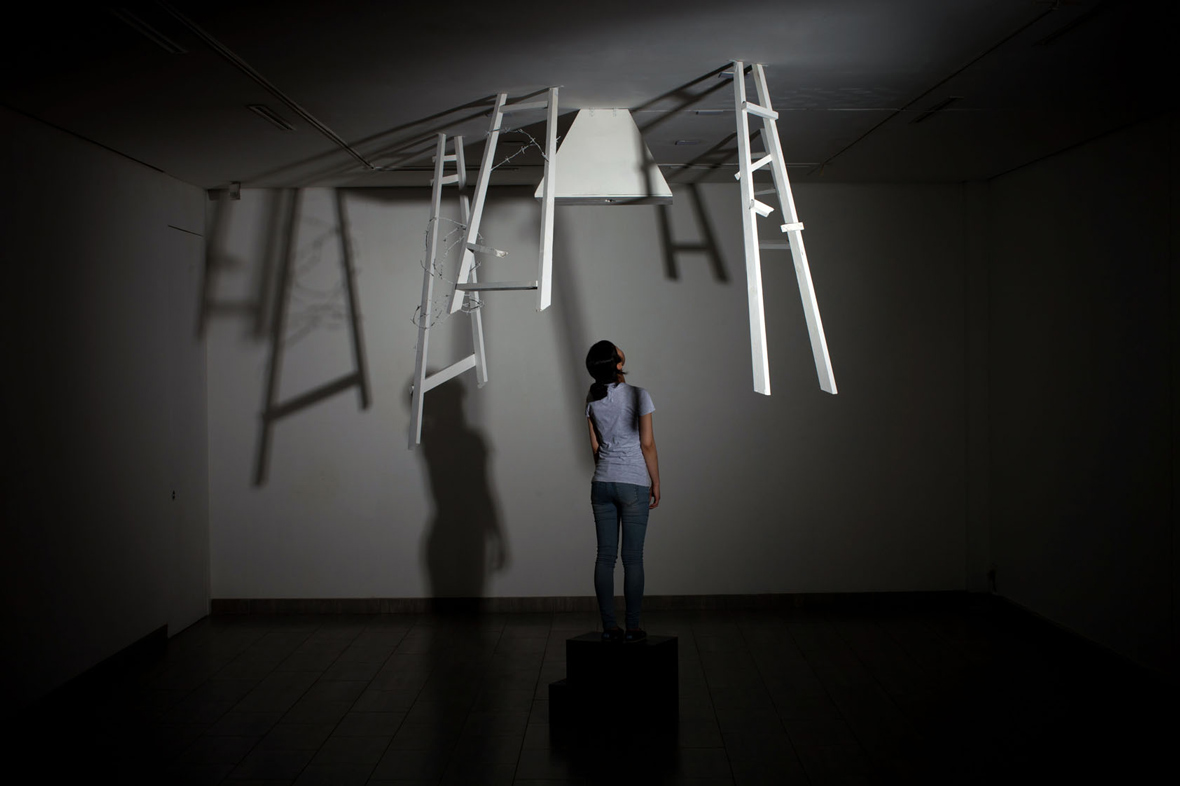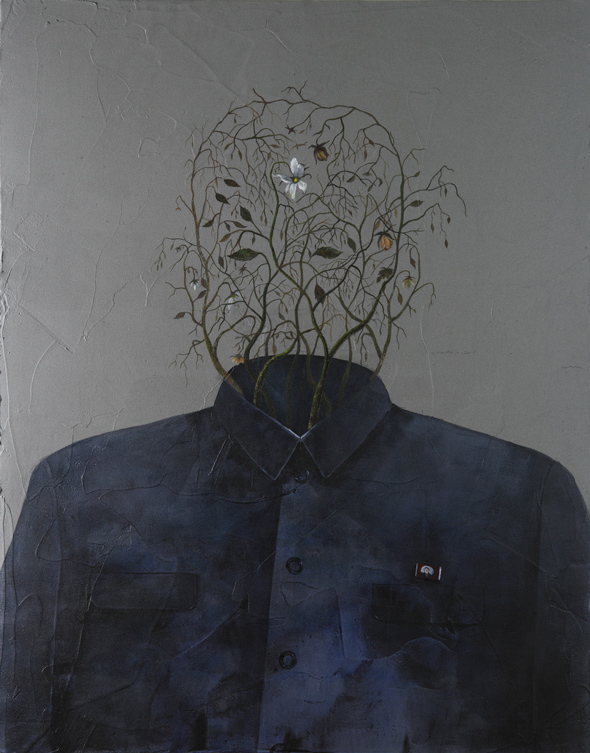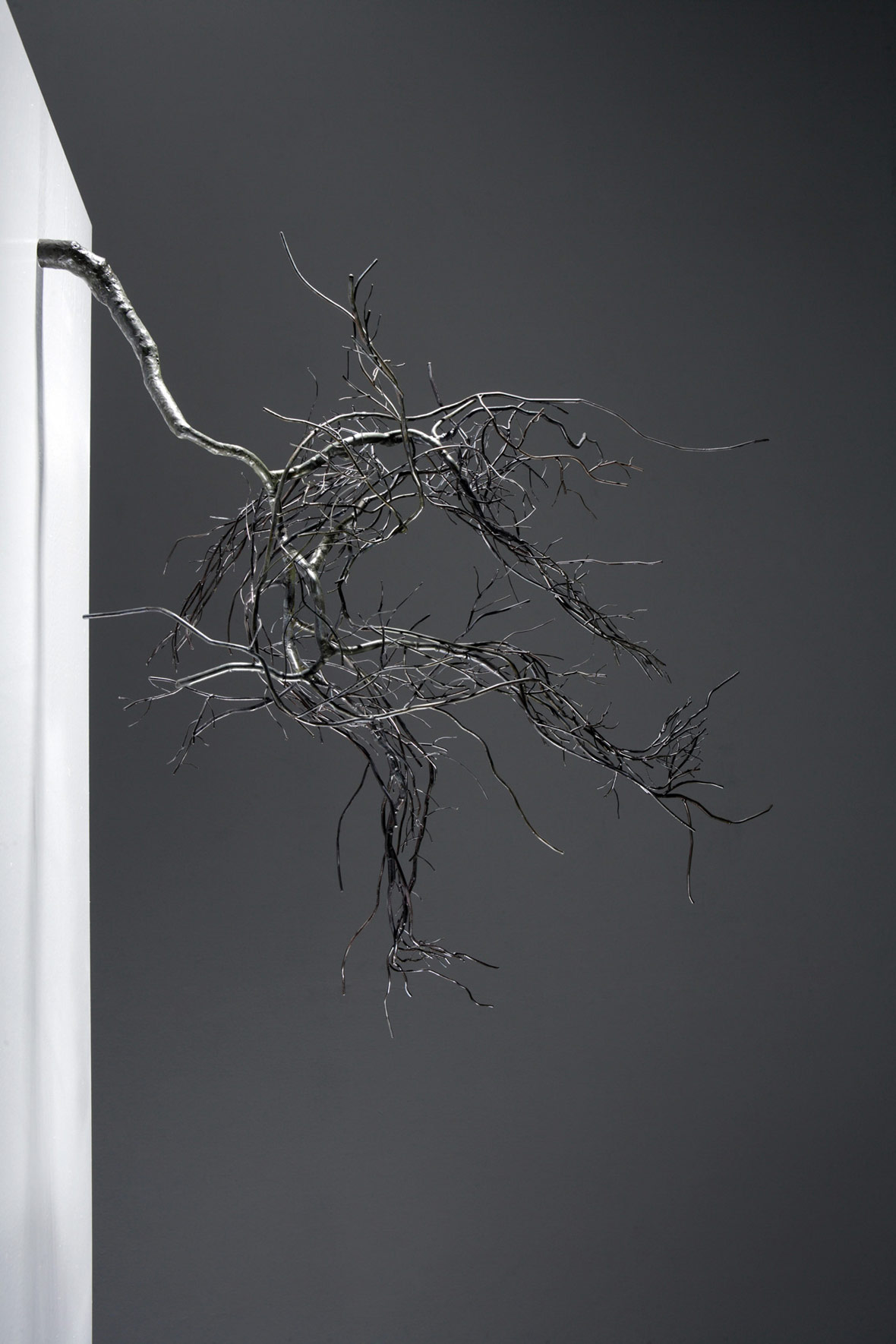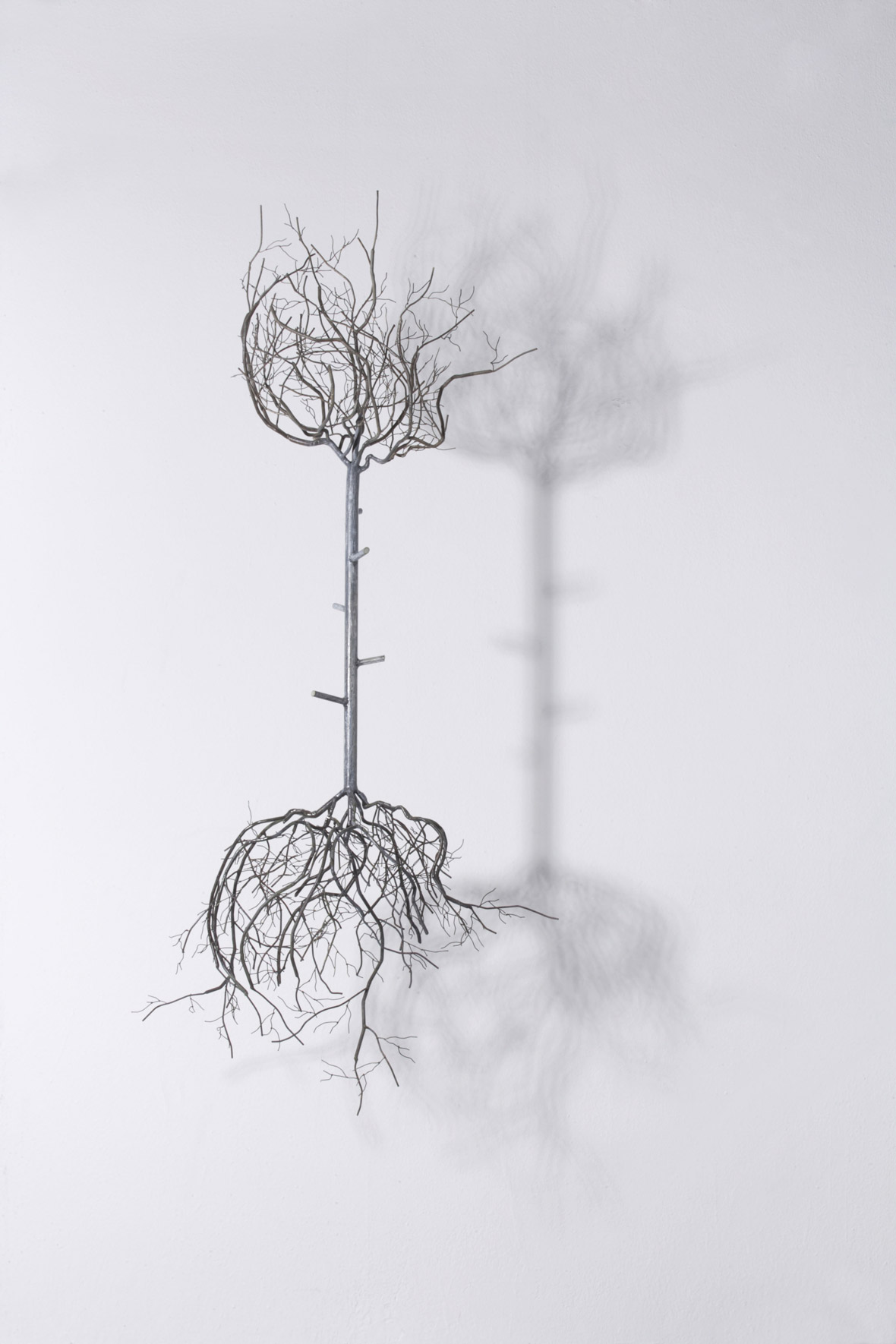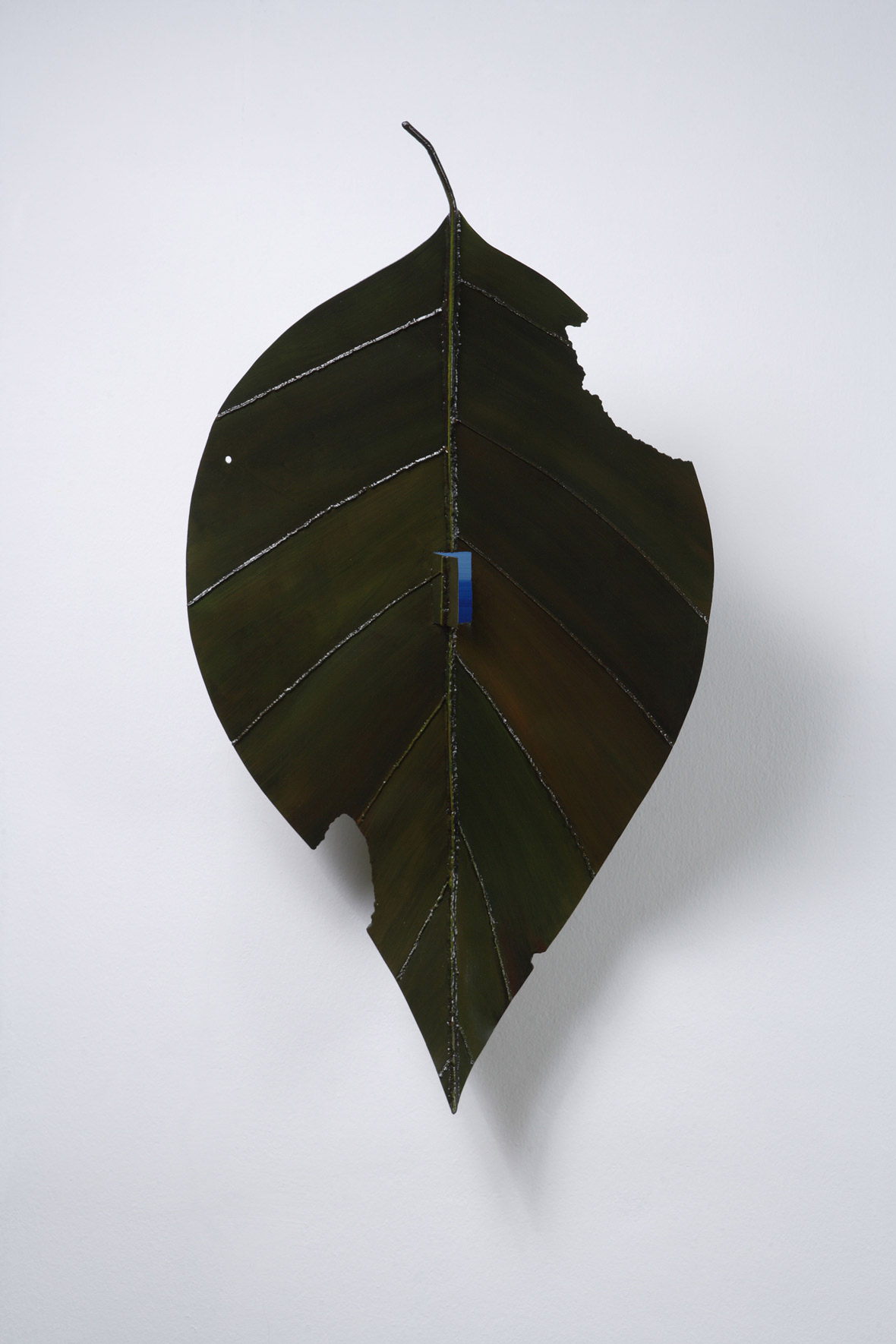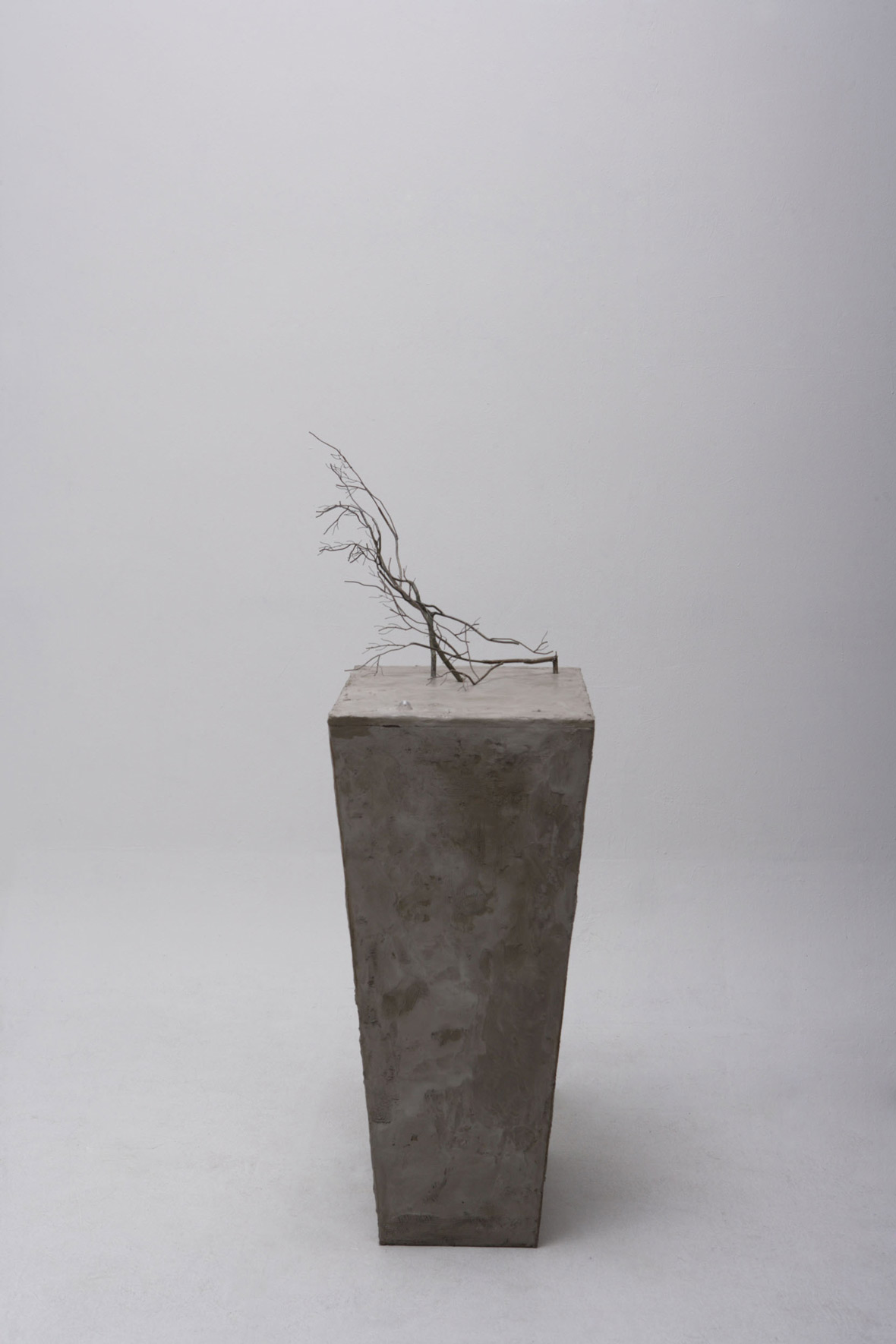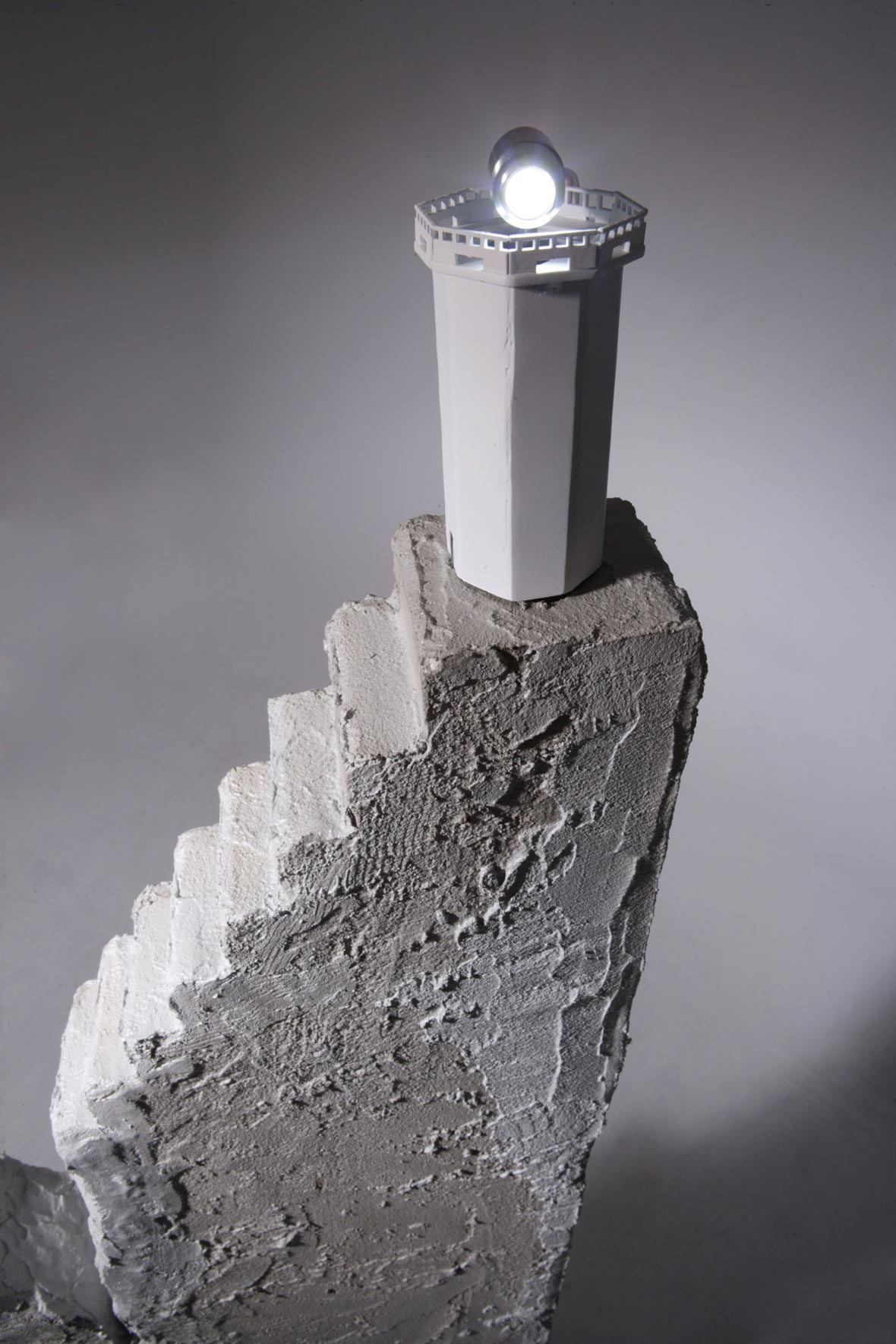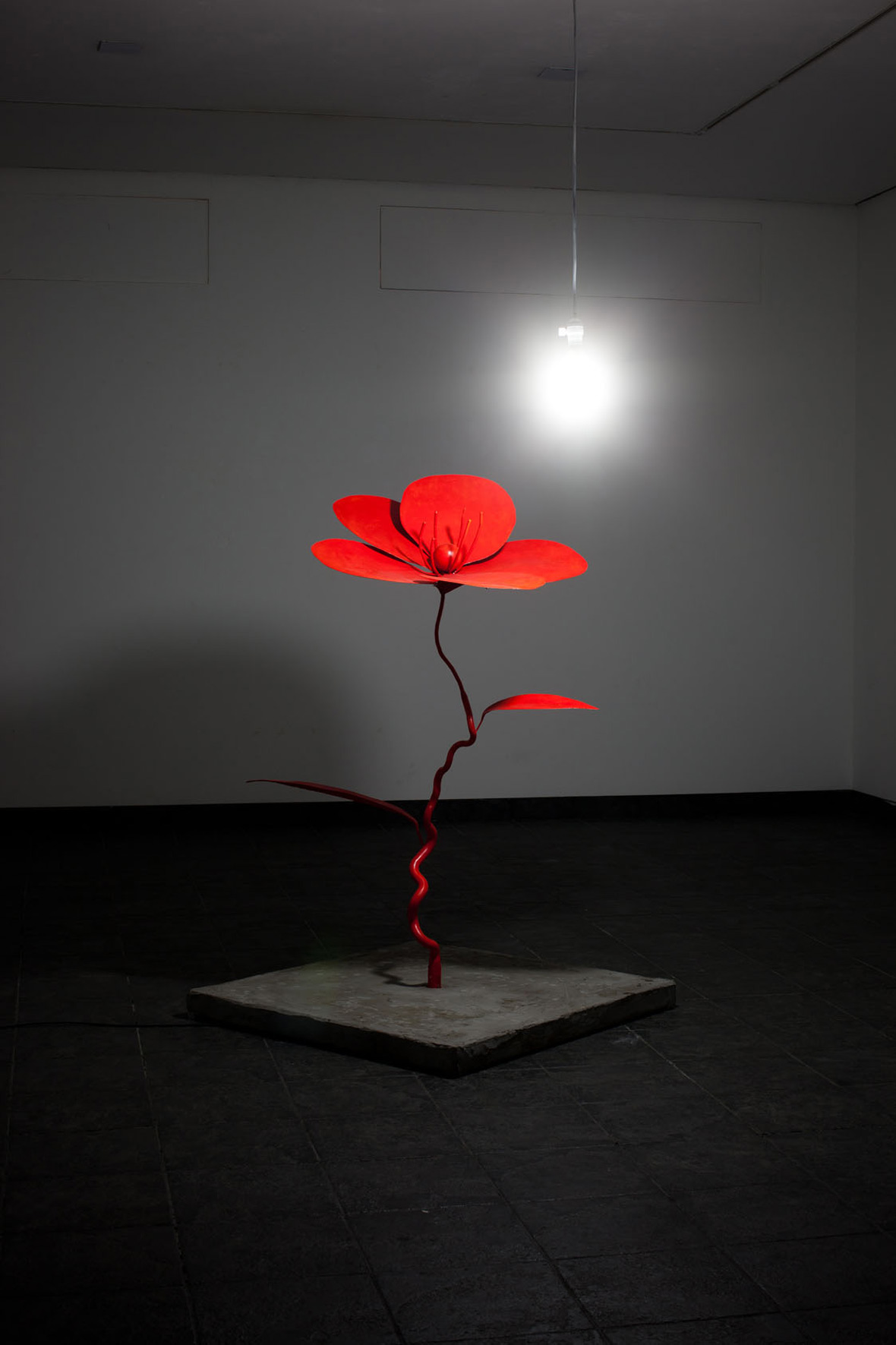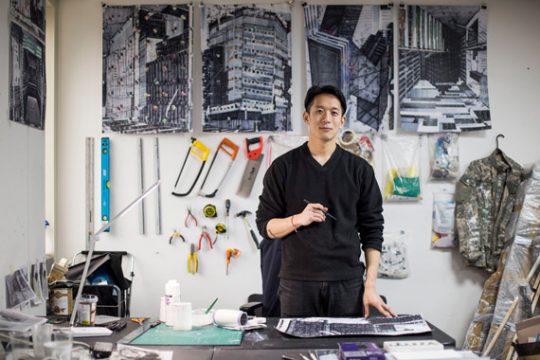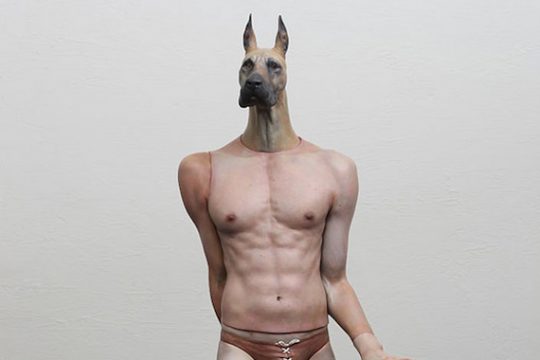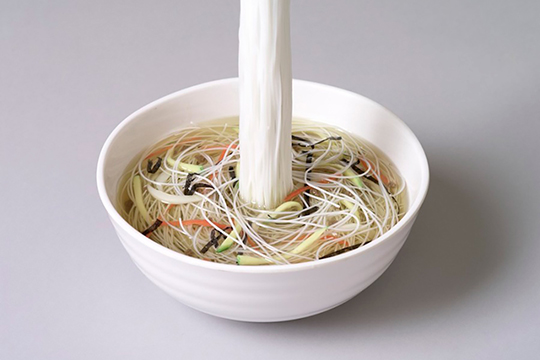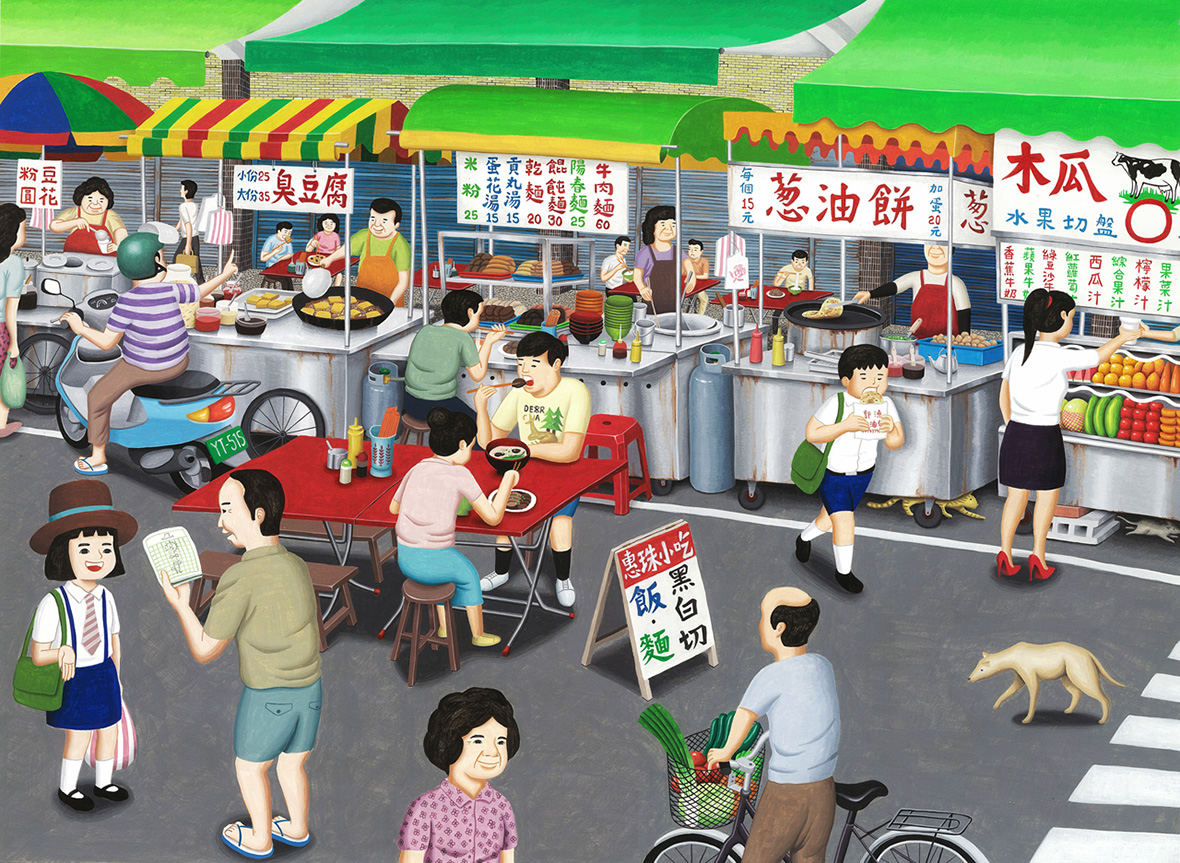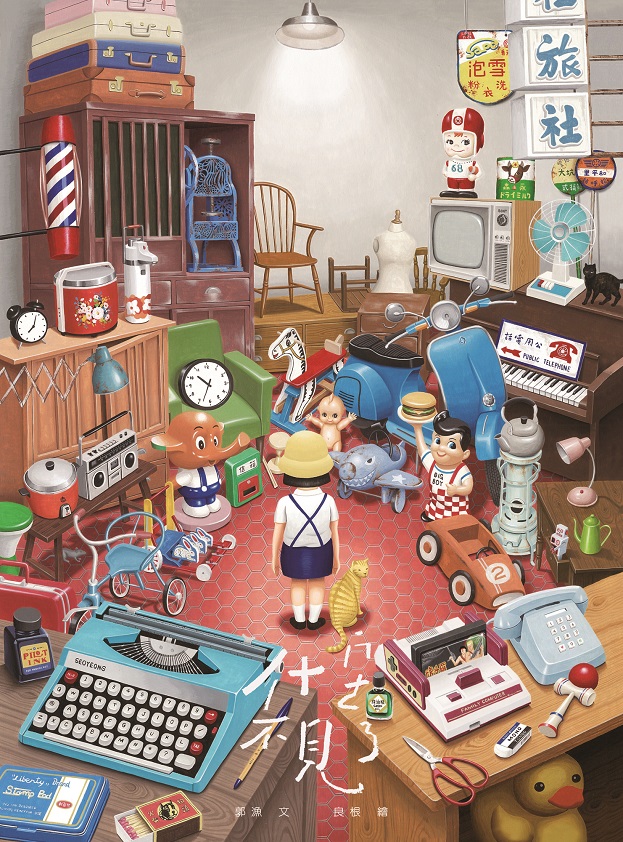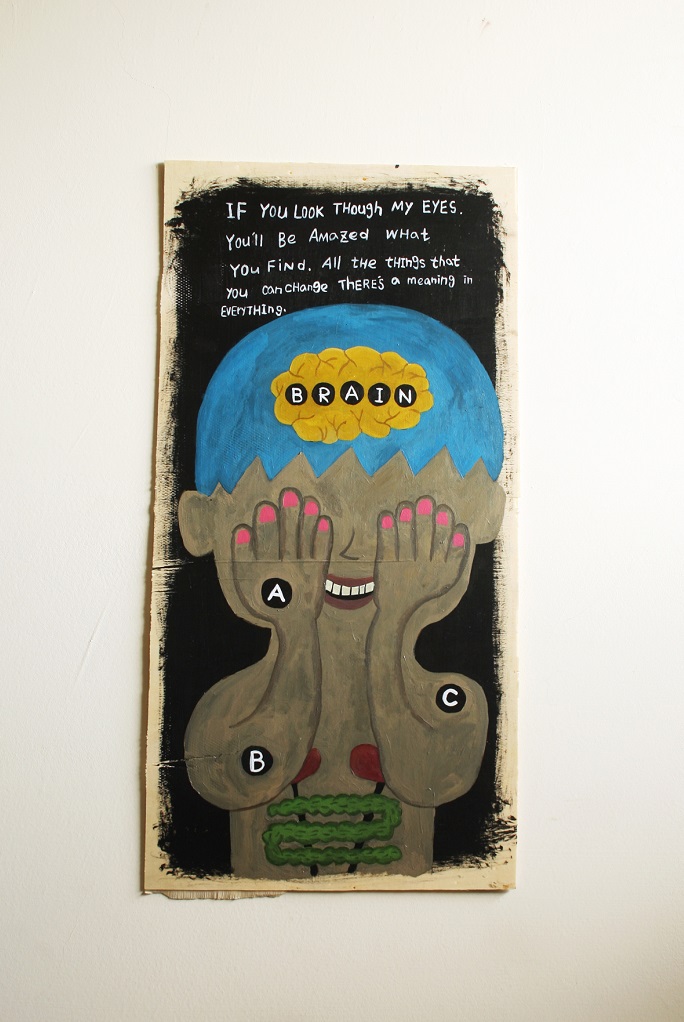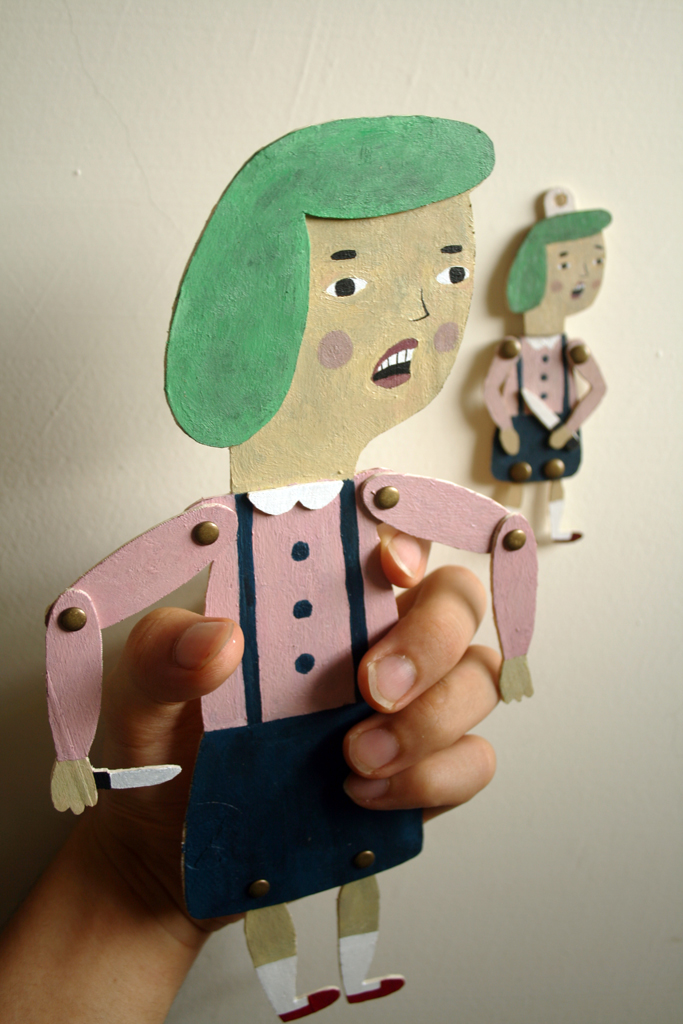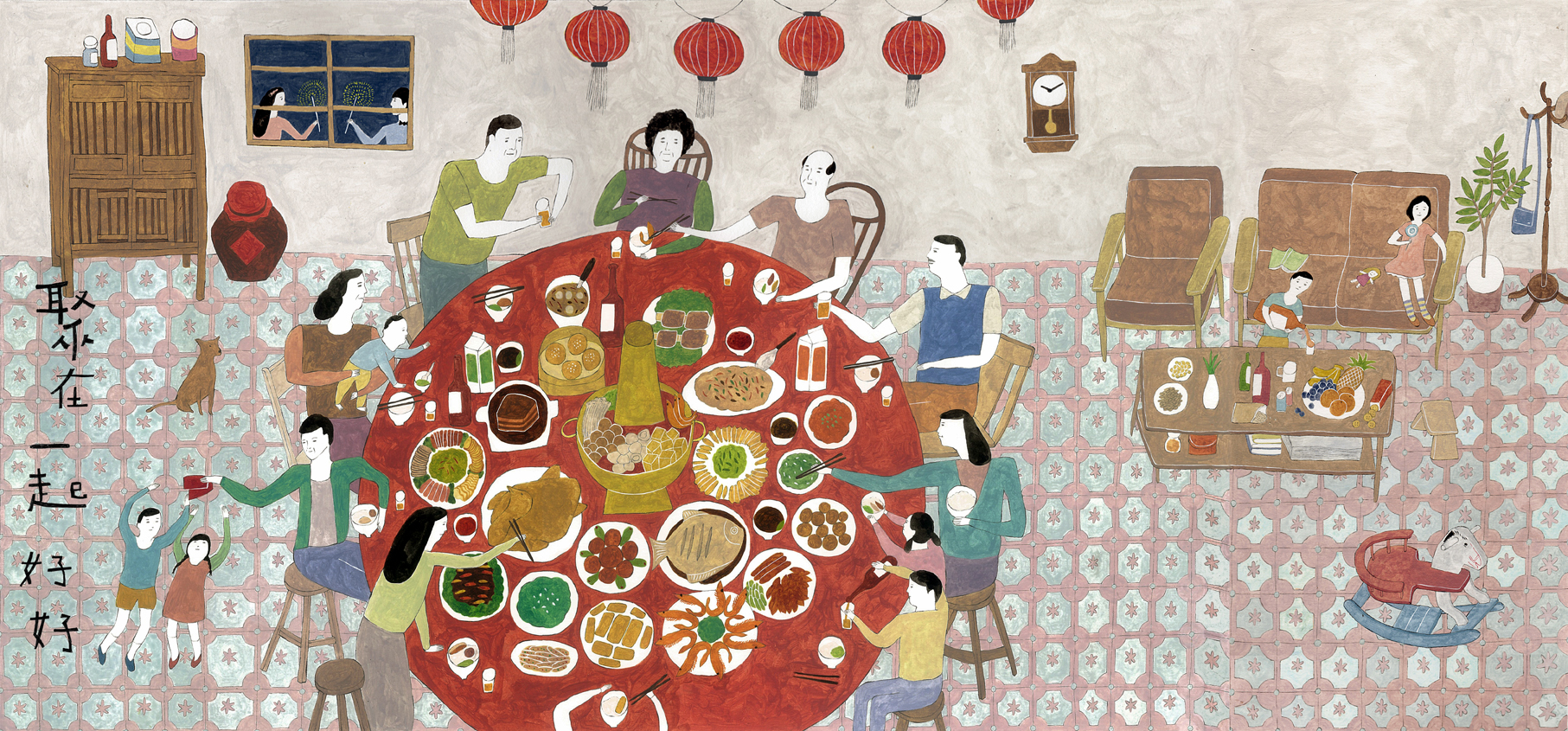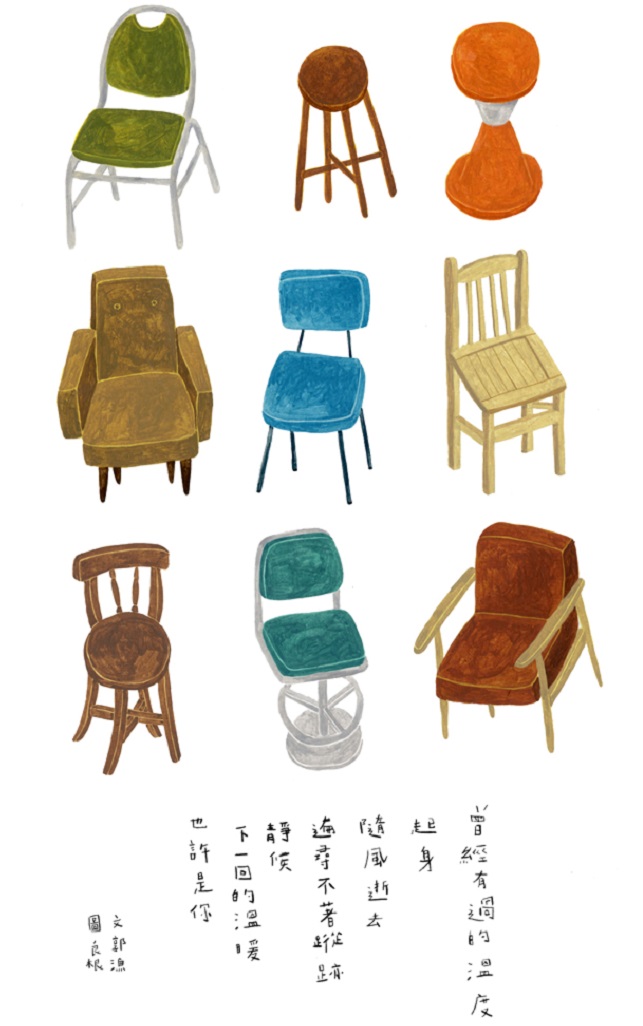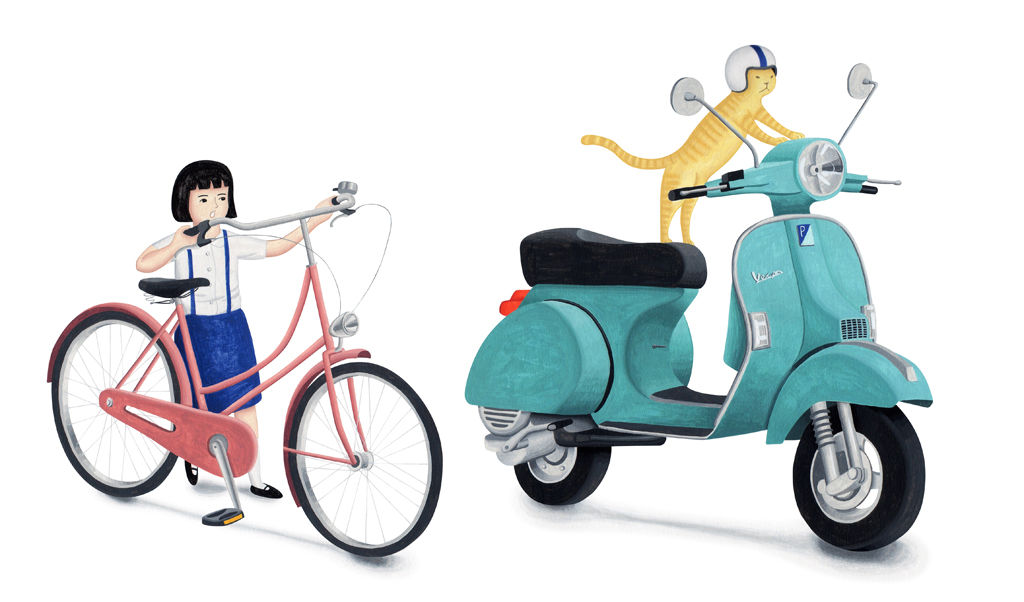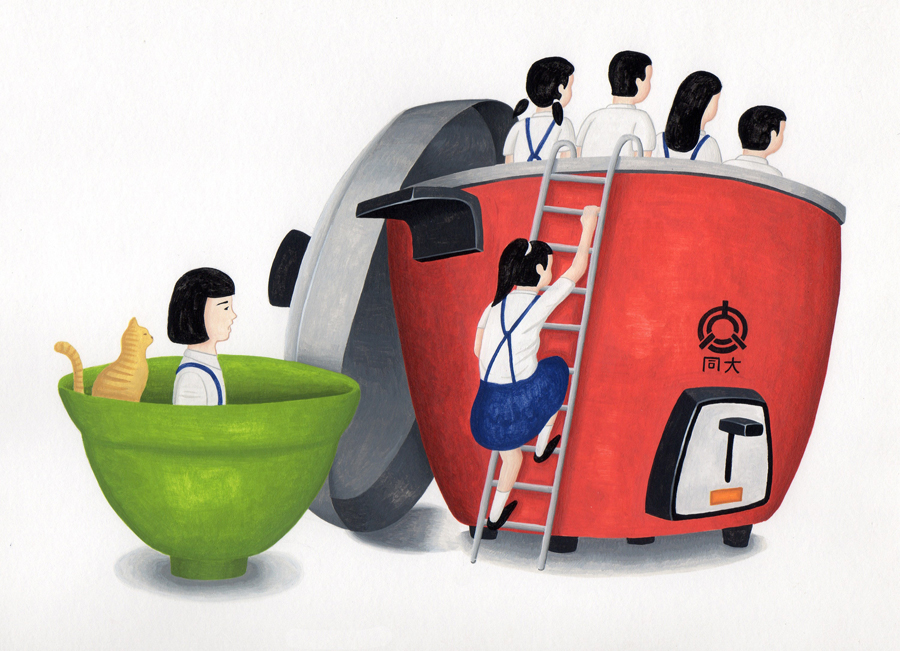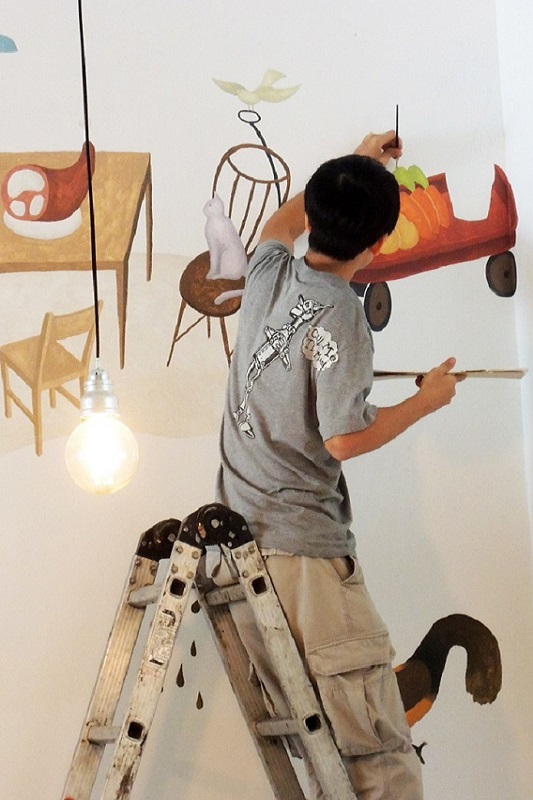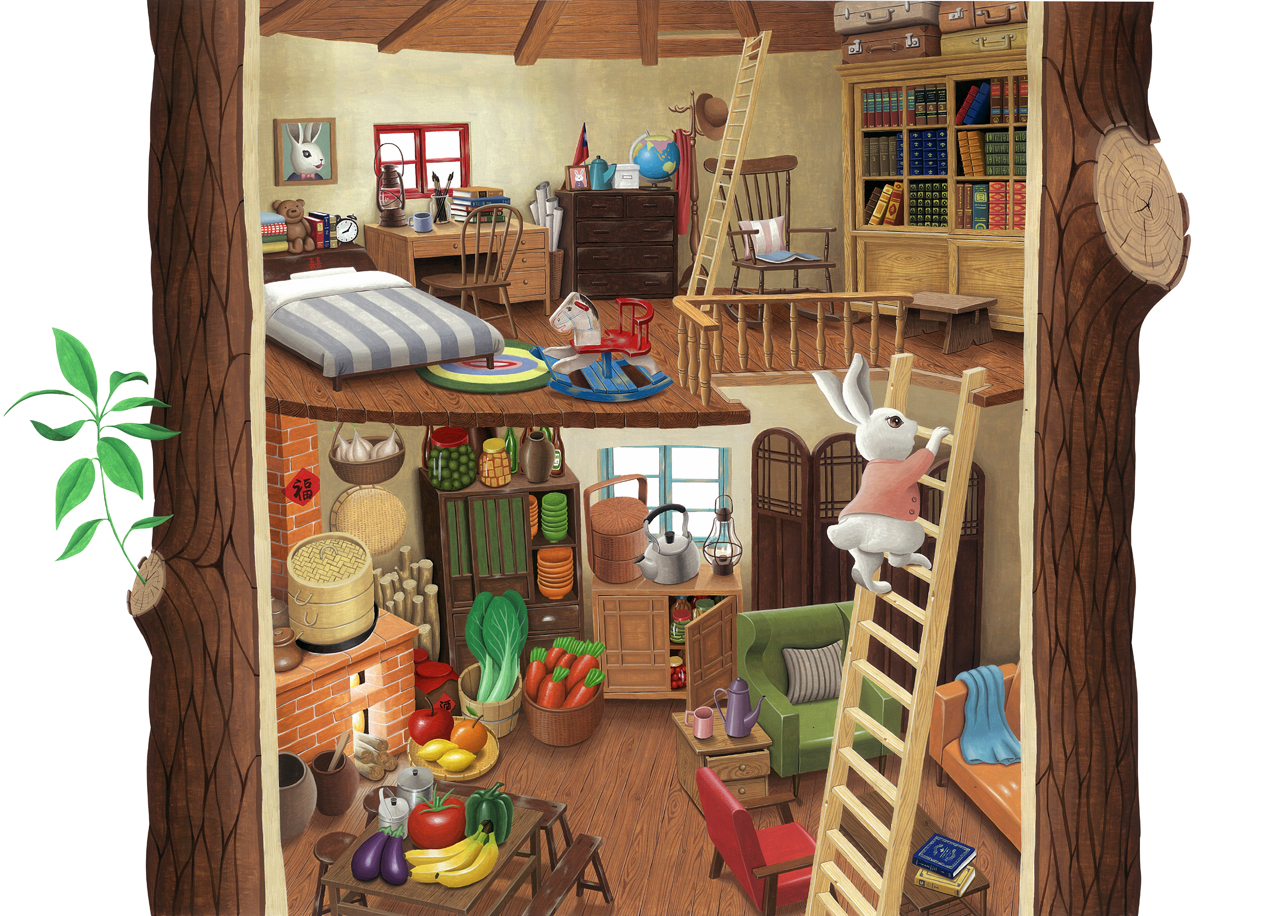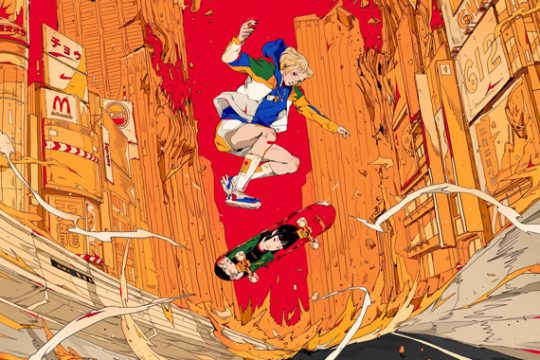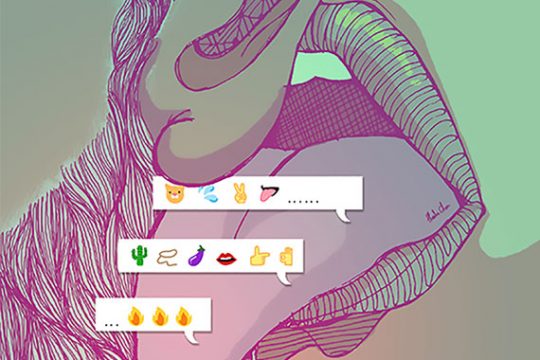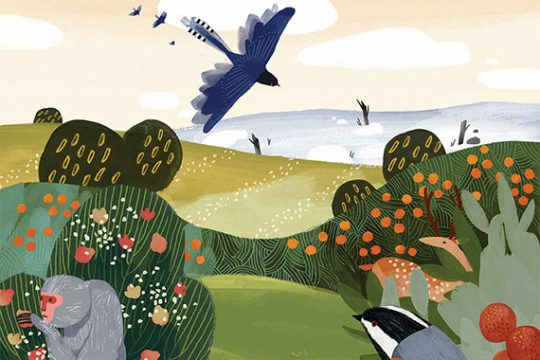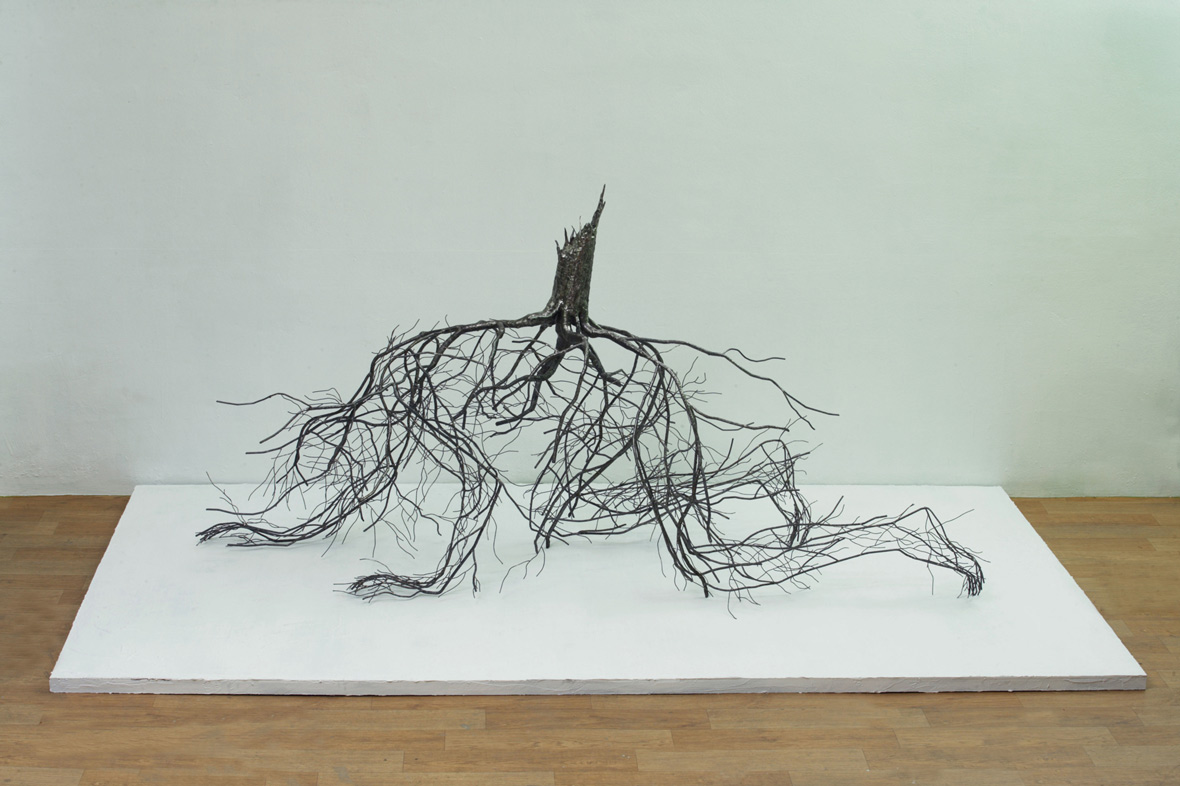
Seoul-based Korean artist Sun-Hyuk Kim produces work in a variety of mediums, such as sculpture, installations, painting, and video art, that poetically examines the human condition and its relation to nature. His root sculptures, constructed from stainless steel wires, depict the ghostly forms of anthropomorphic figures that are mysterious, delicate, skeletal, and appear pitifully weak. They represent the frailties of the modern man, who is obsessed and enslaved by consumerism, overtaken by material greed, and is helpless in the face of nature.
서울에서 작업하는 한국인 예술가 김선혁은 조각, 설치, 회화, 비디오 아트 같은 다양한 매체를 가지고 인간 조건과 자연 관계를 시적으로 생각해보는 작품을 만들어낸다. 스테인리스 스틸 와이어로 만든 그의 뿌리 조각 작품들은 유령 같은 형태를 신비하고 섬세한 골격으로 의인화한 형태로 표현하는데 이들은 모두 비참하게 연약해 보인다. 이 작품들은 소비지상주의에 사로잡혀 있고 물질에 대한 탐욕에 지배당하면서 자연 앞에서는 속수무책인 현대인의 연약함을 표현하고 있다.
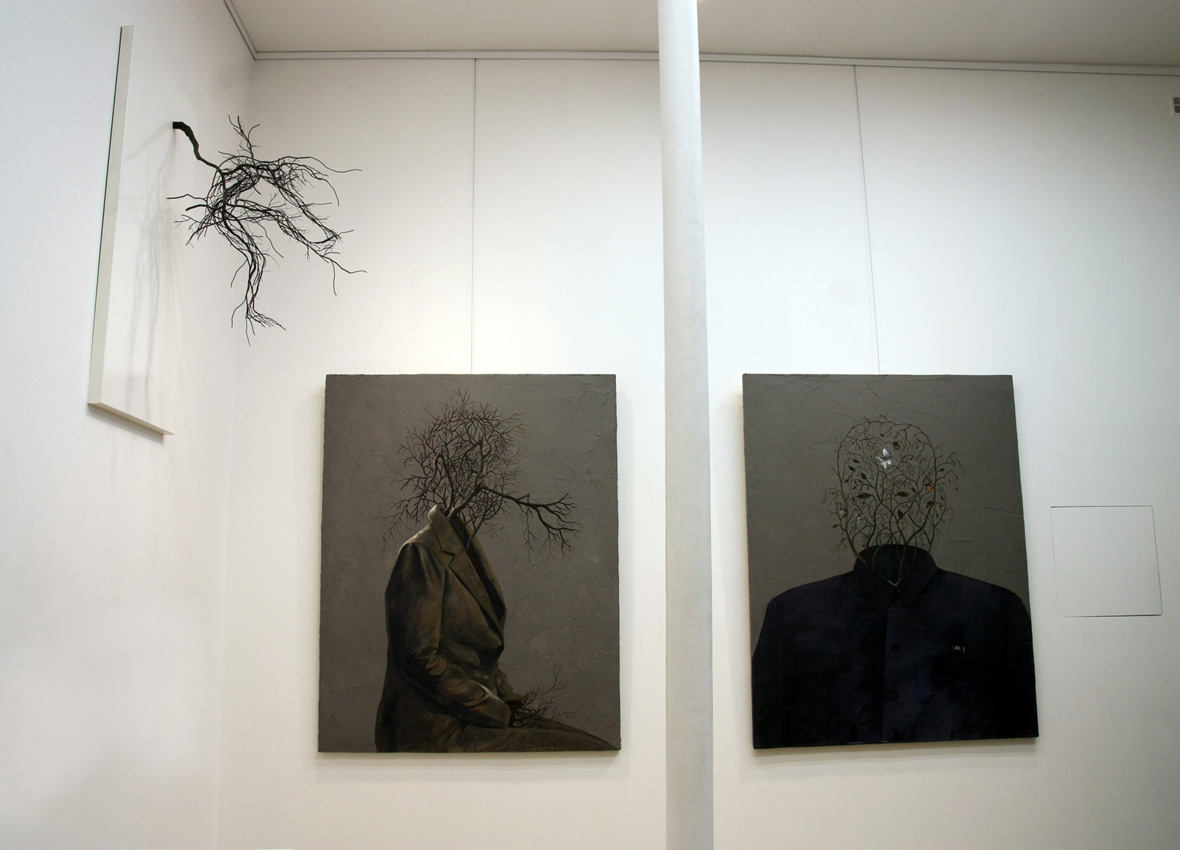
According to Sun-Hyuk, the forms of the roots are intended to mimick the central nervous system of a human body. In some of his acrylic paintings, they are also represented as branches and blossoming vines. For Kim, the underlying concept of his work concerns human existence and theoretical questions on the origin of life and death. He sees our existence as being imperfect, but in a way also perfect, like hovering between a dream state and reality.
김선혁은 뿌리 형태가 인체 중추 신경계를 모방한 것이라고 말한다. 어떤 아크릴 작품에서는 뿌리가 가지와 꽃이 만발한 덩굴로 표현되기도 한다. 김선혁 작품의 기본 개념은 인간 존재와 삶과 죽음 기원에 대한 이론적인 질문이다. 그는 우리 존재를 불완전한 것으로 보지만, 꿈과 현실 사이를 방황하듯 어떤 면에서는 완전한 것으로 보기도 한다.
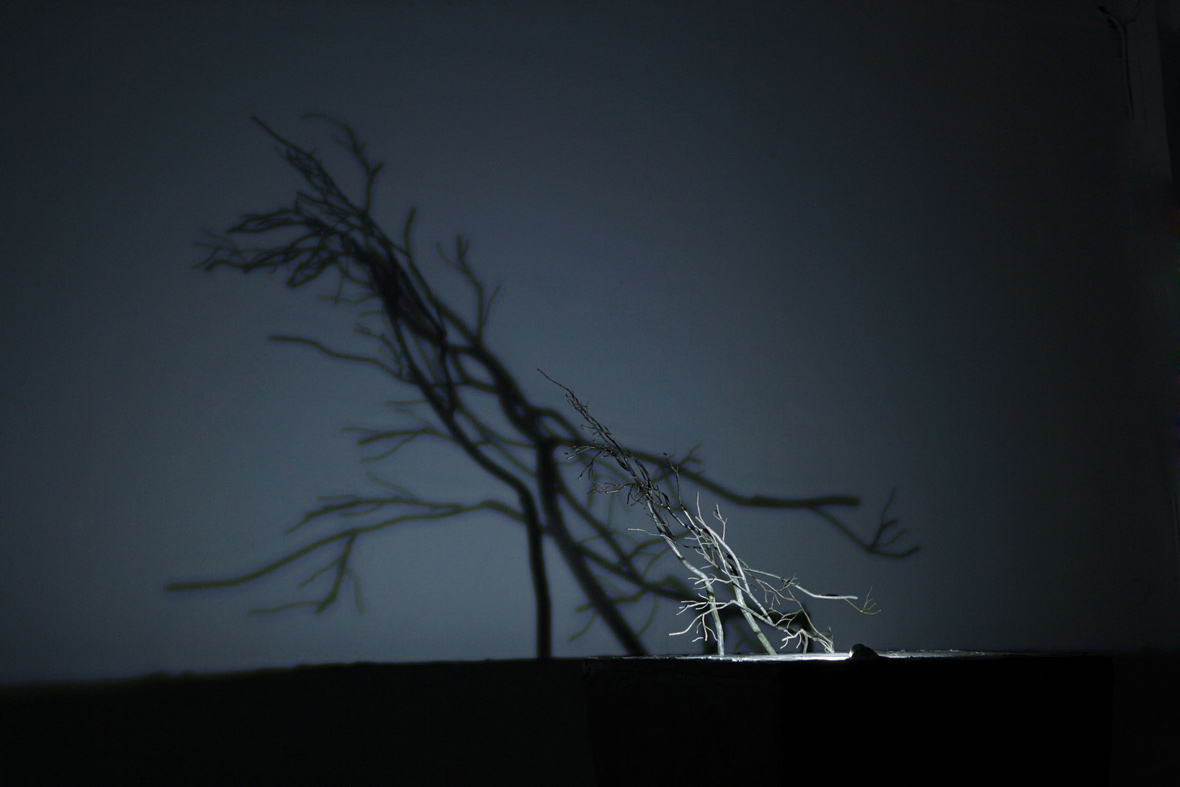
Sun-Hyuk tells us that early in his art education, he was influenced by the work of Belgian surrealist painter Rene Magritte, in particular his seminal and well-known painting Le Château des Pyrénées. In this classic painting, a magnificent castle sits perched on top of a mountain, but the mountain itself also floats above an ocean. It is a sensational and supernatural vision, and one which left a deep impression on Sun-Hyuk and had a profound influence on his own artistic style.
김선혁은 자신이 예술 교육 초기에 벨기에 초현실주의 화가 Rene Magritte (르네 마그리트)의 작품, 특히 그의 유명한 대표작 Le Château des Pyrénées 로부터 영향을 받았다고 말한다. 이 고전 작품을 보면 웅장한 성이 산 정상에 자리 잡고 있고 산은 바다 위에 떠 있다. 김선혁은 이 작품의 충격적이고 초자연적인 비전에 깊은 인상을 받았으며 이 비전은 김선혁의 예술적 스타일에도 큰 영향을 주었다.

There is also a sense of longing in Kim’s work. The visual elements he uses are highly symbolic and often convey a feeling of thirst or a natural desire to become whole. One of his installations shows a seedling that sprouts from a pile of dead leaves – a deceptively simple image that depicts the continual process of death and rebirth. In another installation, an imperfect leaf, partially eaten by insects, unexpectedly has a small door opening from its center, here subtly revealing what looks like an impossibly blue ocean and horizon on the other side. This stunningly cryptic image, also highly reminiscent of the classic surreal visual devices used by Magritte, is another fine representation of Sun-Hyuk Kim’s work.
김선혁 작품에는 갈망하는 느낌도 있다. 그가 사용하는 매우 상징적인 시각 요소는 갈증 느낌이나 온전한 전체가 되기 원하는 자연적인 욕망을 표현한다. 그의 설치 작품 하나는 죽은 나뭇잎 더미에서 싹트는 묘목을 보여주는데 이는 죽음과 재탄생의 계속적인 과정을 묘사하는 단순하지만 현혹적인 이미지다. 또 다른 설치 작품은 부분적으로 곤충이 먹은 불완전한 잎사귀 한 가운데 작은 문이 있고 믿기 어려울 정도로 파란 바다와 수평선이 문을 통해 보인다. 이 놀랍고도 난해한 이미지는 마그리트가 사용하는 고전적 초현실적 시각 장치를 연상시키는 것으로 이 작품은 김선혁의 대표작 중 하나라고 할 수 있다.
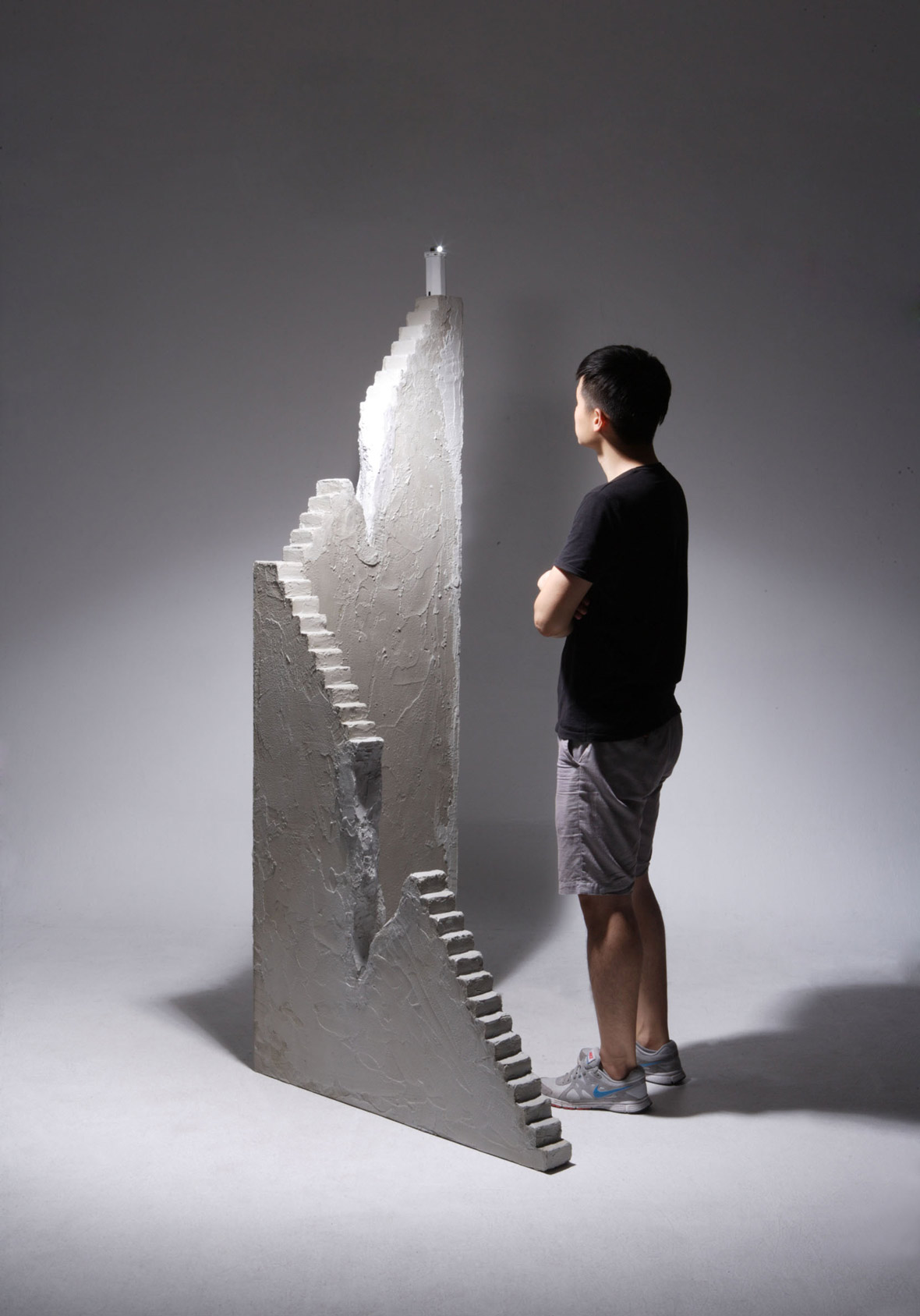
According to Sun-Hyuk, Korea is actually not an easy place to try to make a living as an artist. Most artists there earn only one million won KRW (or $800 USD) a month, which doesn’t even meet the minimum income standard for living in Seoul. Even commercial galleries in Seoul are struggling, and there is not widespread support for more experimental work. Especially challenging for young artists is being able to afford the artist fees for exhibiting one’s work. Despite this, there are still very many young people in Korea who believe, that by working hard and persevering, they will be able to succeed as great artists and to show the world Korean art.
김선혁은 한국이 예술로 생계를 이어 나가기 어려운 곳이라고 말한다. 대부분 예술가들이 한 달에 100만원 ($800 USD) 정도 버는데, 이는 서울 최저 생계비에 못 미친다. 서울에 있는 상업적 갤러리들도 어려움을 겪고 있으며, 실험적인 작품에 대한 지원도 별로 없다. 특히 젊은 예술가들은 작품 전시 비용을 마련하는데 어려움을 겪고 있다. 그래도 열심히 그리고 끈기 있게 노력하면 위대한 예술가로 성공할 수 있고 세계에 한국 예술을 소개할 수 있다고 믿는 젊은 예술가들이 많이 있다.
